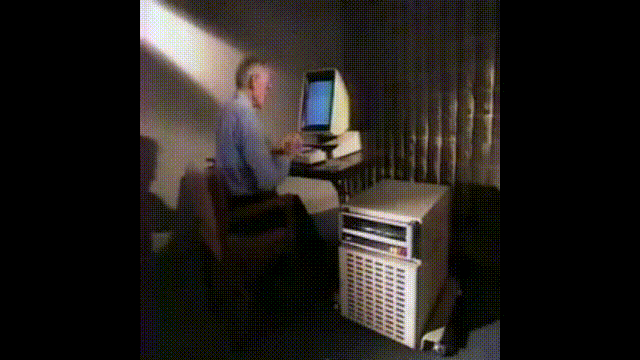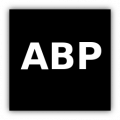User:Joak/graduation/proposal: Difference between revisions
No edit summary |
No edit summary |
||
| Line 58: | Line 58: | ||
margin-left: auto; | margin-left: auto; | ||
margin-right: auto"><b> | margin-right: auto"><b> | ||
In the last years, online platforms for distribution, sharing and production of digital art opened their doors for a public at large and picture them selfs as a "revolutionary new way to collect, share and trade art"<ref> http://www.seditionart.com/</ref>, claiming to "push the possibilities of creativity" <ref>https://devart.withgoogle.com/</ref> or to "place the artist’s work in a broader global visual context free from the hegemonic monetary system" <ref> https://cointemporary.com/about/ </ref>. However, in my gradution project I will focus on this recent developments and impacts of those art platforms. The most relevant question I will follow in my research is how to show the underlining association in which such platforms are part of and thereby answer how it will affect the conditions of an artwork. Apart from the essay, my artistic outcome will deal with the ongoing processes on platforms and exhibited as | In the last years, online platforms for distribution, sharing and production of digital art opened their doors for a public at large and picture them selfs as a "revolutionary new way to collect, share and trade art"<ref> http://www.seditionart.com/</ref>, claiming to "push the possibilities of creativity" <ref>https://devart.withgoogle.com/</ref> or to "place the artist’s work in a broader global visual context free from the hegemonic monetary system" <ref> https://cointemporary.com/about/ </ref>. However, in my gradution project I will focus on this recent developments and impacts of those art platforms. The most relevant question I will follow in my research is how to show the underlining association in which such platforms are part of and thereby answer how it will affect the conditions of an artwork. Apart from the essay, my artistic outcome will deal with the ongoing processes on platforms and will be exhibited as an installation. </b> | ||
</p> | </p> | ||
<br> | <br> | ||
Revision as of 12:34, 5 November 2014
The following text implies some mistakes evoked by my dyslexia and writing skills! A correction follows soon.
Proposal
..., artists are being led into a technological kindergarten the idea being that the artist
can amuse himself and some of the populace with the gadgetry of modern life.
G. Metzger [1]
Introduction
In the last years, online platforms for distribution, sharing and production of digital art opened their doors for a public at large and picture them selfs as a "revolutionary new way to collect, share and trade art"[2], claiming to "push the possibilities of creativity" [3] or to "place the artist’s work in a broader global visual context free from the hegemonic monetary system" [4]. However, in my gradution project I will focus on this recent developments and impacts of those art platforms. The most relevant question I will follow in my research is how to show the underlining association in which such platforms are part of and thereby answer how it will affect the conditions of an artwork. Apart from the essay, my artistic outcome will deal with the ongoing processes on platforms and will be exhibited as an installation.
Distribution and Destruction
The current model of an artist could be called "exhibition artist"(in German "Ausstellungskünstler")[5] - a term coined by the Swiss art historian Oskar Brätschmann. The exhibition artist doesn't - like his predecessor the court artist - rely on commissions by his king, a lord or an aristocrat. As a patron and distributor for idea of this "free" artist gets the gallery into the game. In this association the gallery functions mostly as his and sometimes as her point of sale. In this case they act as an agent for the artist by exhibiting their works and managing the costumer relations. The ideal customer of course is an ambitious collector who's interested in the artists aesthetics. Thereby his investment he is supporting the cultural identity of society in a healthy relation with the foresight of curators, the judgment of critics, the acceptance of the audience and contextualization by art historians.
This is a romanticized picture of an artist in modernity characterising him or her as a independent agent working purely for his aesthetic needs. This well known stereotype never existed, but it's still deep embedded in the picture of societies of an artist role. As we know only to well, that art is and was instrumentalized by ideology. For instance from the sponsorship of art is a common method by banks to multi-coloredwashing there image (the greenwashing of the artsystem), right up to the choice of certain curators for particular artists as a strategical decision, over the common practice of gallery owners which often board members of public museums to pushing decision in their own (financial) interest, and not to forget the artists which are aware of there economic situation. So it's a logical consequence to assume this is the reason why "flat-ware" is still the main artistic outcome. To summarize, all this circumstances are going far beyond the scope of the intension whicht had artist in mind for their artworks, but this external influnces are still part of the artwork. The whole association is shaping it in that sense it is hard to suppose the artist as the only actor working on his or her work.
Paragraph missing
Paragraph missing
Outcome
My outcome will contain - next to a critical analysis of a particular platform in form of an essay - a project that deals with the condition that those platforms create. At this initial stage, the project will go in one of two directions as a intervention on a platform or platform as a parody created by myself. First, my plan is a intervention in a distribution system as disruption of the ongoing behavior and by that I can get information of it's own mechanism. Second, the created platform will mimic a already existing commercial orientated platforms, but at the some time turns the internal mechanism one eighty degrees(180 °) and thereby parodies it's own circumstances. The final exhibition or the graduation show can expect a documentation in form of a installation about the process that my project triggered. I am aware that presenting online projects or process based artworks in a exhibition is always a difficult undertaking, therefore I'm searching for a way to present it as physical installation.
Practical steps
Research points
- Historical dimension of art distribution in the digital age:
- ARTEX(Artist's Electronic Exchange Network) 1980
- "La Plissure du Texte: A Planetary Fairy Tale" by Roy Ascott 1984
- The electronic gallery, 1993
- In 2001 Ars Electronica Festivals topic was "takeover - who's doing the art of tomorrow". A symposium on the topic "The Undertakings of Art - Who will survive?" took place and discussed how the artsystem is situated "for the future, for the globalization of the art market, for the new digital forms of distribution, and, above all, for the demands of artists." It opens the question how was the vision for an artsystem 13 years ago?
- Current examples of art distribution in the digital age:
- Distribution:
- Seditionart "digital art at your fingertips" "...art that you love." "Watch your editions appreciate in value as other collectors move the market." "And take it with you wherever you go." http://www.seditionart.com/how-it-works
- Electric Objects: "A Computer Made for Art" http://electricobjects.com/
- FRAMED* — "A Revolutionary Platform For Digital Art" http://frm.fm/en/
- Corporate art:
- Google Devart https://devart.withgoogle.com/
- Online gallery networks:
- artsy "Discover, Research, and Collect the World's Best Art Online" https://artsy.net/
- Distribution:
- Limitation systems:
- DRM
- HDMI
Previous practice
In previous projects, I focused on the unmasking of underling mechanism of the artsystem and artworks sometimes involved in a parodistic way and an exaggeration of a specific action. In piano for 3 seconds(2010) a specific intervention for an exhibition the artwork was destroyed before the opening. The remains were sent to a the archive of an "important" museum for art and media as a jump over of the normal states in the life of an artwork and to archive it there immediately. In the exhibition viewers could only see the conformation of the postal order. In the case of Gsell_1(2011) the artwork willl destroy itself by sawing on the own woodbranch. It is connected to the idea of auto-destructive art. The well known Artblockplus(2013) - was realized during my first year in the PZI - is an addon/extension for Firefox and Chrome internetbrowsers to help the user blocking art. In Analysis of 20 artworks on the assembly line(2013) I applying statistical analysis(in this case a computer vision object detection) to 20 images of artworks and presented the graphical outcome on a running assembly line.
References
-
<references>
- ↑ Metzger G,
- ↑ http://www.seditionart.com/
- ↑ https://devart.withgoogle.com/
- ↑ https://cointemporary.com/about/
- ↑ Brätschmann O,




